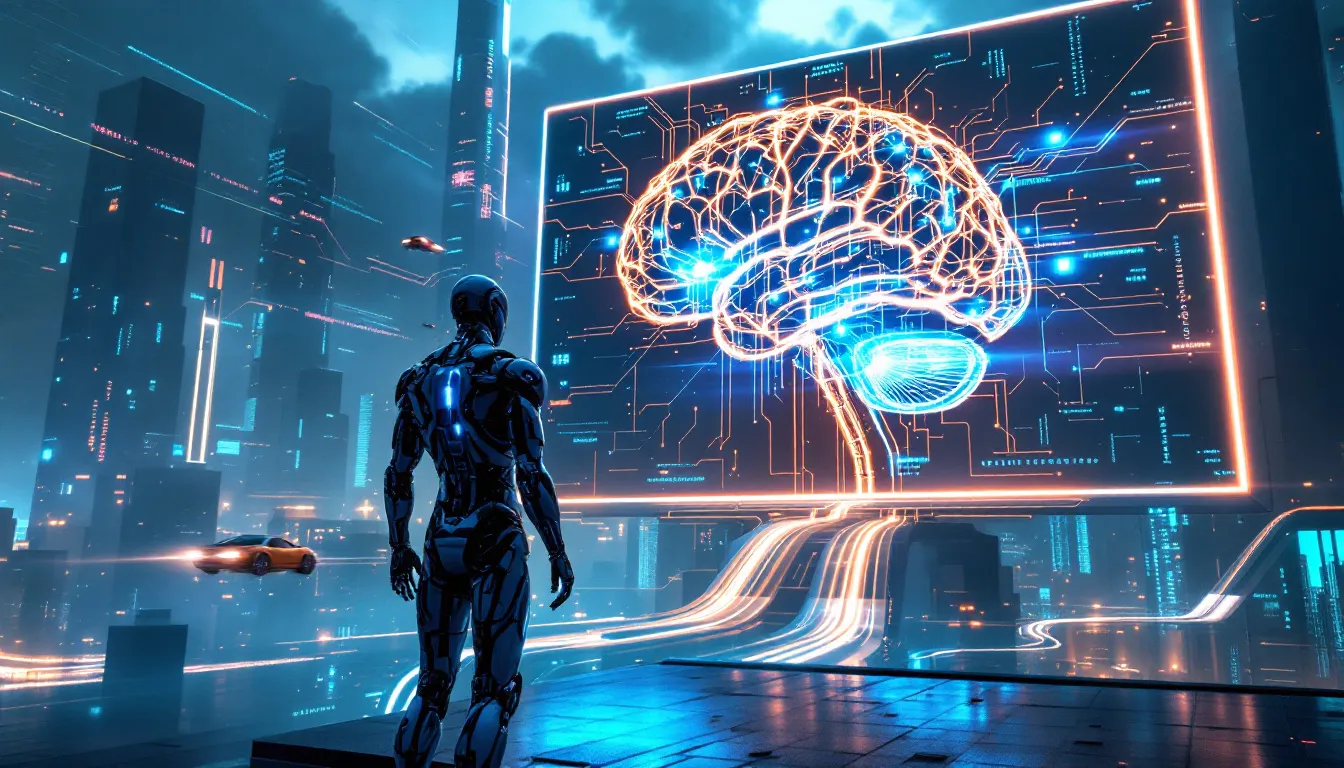Struggling with time-consuming AI agent development? AI systems play a crucial role in building foundational infrastructure for applications, and the Model Context Protocol (MCP) can help. By integrating MCP with SmartBuckets, you can build high-performance AI agents in days instead of months. This article breaks down how this integration simplifies the process.
SmartBuckets and Model Context Protocol (MCP) drastically reduce the time needed to develop AI agents from months to days by automating knowledge processing and retrieval.
The integration of SmartBuckets eliminates the complexities of traditional RAG pipelines, allowing teams to focus on agent behavior and user experience rather than infrastructure development.
Key capabilities of SmartBuckets, such as automatic knowledge graph creation, multi-modal document understanding, and pre-built ranking algorithms, streamline agent development, and enhance retrieval precision.
Detailed documentation and examples for integrating SmartBuckets and MCP are available, including SDKs for various programming languages and use case guides.
Building effective AI agents has become the defining challenge for today’s technical teams. Despite the power of modern language models, creating agents that can reliably access and reason with organizational knowledge while handling knowledge-intensive tasks remains surprisingly difficult and time-consuming.
The standard approach to building these agents—constructing custom retrieval-augmented generation (RAG) pipelines typically consumes over six months of engineering time. During this period, teams must:
Integrate vector databases
Build chunking logic
Design embedding workflows
Create ranking algorithms
Handle document processing, among other tasks, to ensure effective retrieval augmented generation work.
Traditional LLMs face limitations due to their reliance on static training data. However, RAG systems address these limitations by incorporating external data, allowing models to dynamically access and integrate up-to-date information at the time of querying. This capability enhances the accuracy and contextual relevance of the responses generated by LLMs.
Even after this significant investment, maintaining these systems becomes an ongoing burden as knowledge bases evolve, impacting overall security with new data.
At LiquidMetal AI, we’ve addressed this challenge head-on. Integrating our SmartBuckets technology with Anthropic’s Model Context Protocol (MCP) has dramatically accelerated the development of AI agents. This combination eliminates the RAG pipeline bottleneck, enabling teams to build sophisticated knowledge-powered agents in days instead of months. This integration represents a fundamental shift in how organizations approach AI agent development, transforming it from a complex engineering project into a straightforward configuration exercise.
Imagine a world where your AI agents can access and reason with organizational knowledge seamlessly, without the months-long engineering efforts. With SmartBuckets and MCP, this vision is now a reality. As you read on, you’ll discover how this powerful combination works, its capabilities, real-world applications, and what the future holds.

Traditional approaches to building knowledge-powered AI agents involve constructing complex RAG pipelines with multiple components. These components include document processing systems for extracting text from diverse document formats, chunking logic for breaking documents into appropriate segments, embedding generation for creating vector representations of text chunks, and vector databases for storing and indexing these embeddings for retrieval.
Additional components involve retrieval mechanisms for finding relevant documents based on queries, context assembly for packaging retrieved information for the model, and response generating for integrating retrieved knowledge with model capabilities. Advanced search engines now employ hybrid search methodologies, combining semantic and keyword search to enhance the retrieval of relevant documents by utilizing multi-modal embeddings and re-ranking mechanisms. Each of these tools requires significant engineering effort and introduces potential points of failure, including relevant facts, the user’s question, and inaccurate responses.
Teams typically spend months iterating on these pipelines before achieving acceptable performance. Even after deployment, ongoing maintenance consumes substantial resources as data evolves and edge cases emerge. This development bottleneck has become the primary constraint on AI adoption. Organizations have the models and data they need but lack the engineering resources to connect them effectively at scale.
The complexity and time-consuming nature of building custom RAG pipelines have stifled the rapid deployment of AI agents. However, this bottleneck is not an insurmountable barrier. By understanding the intricacies involved and leveraging innovative solutions like SmartBuckets and MCP, we can pave the way for more efficient and scalable AI agent development.

SmartBuckets provides a complete knowledge engine that eliminates the need to build RAG pipelines from scratch. This system handles the entire knowledge processing workflow, offering key capabilities that streamline the development process. These capabilities include ready-to-use vector database storage with intelligent chunking, automatic knowledge graph creation, automatic metadata enrichment, multi-modal document understanding, pre-built ranking algorithms, and versioning and knowledge base management. Additionally, SmartBuckets leverages generative AI to enhance outputs through Retrieval-Augmented Generation (RAG) processes.
Each of these specific capabilities dramatically reduces the engineering effort required to develop AI agents. SmartBuckets also facilitates the generation of LLM embeddings, which serve as numerical representations in a large vector space, stored in a vector database for document retrieval purposes. Each capability of SmartBuckets simplifies and accelerates the development of sophisticated, knowledge-powered agents.
SmartBuckets processes documents into optimal chunks based on content structure, preserving relationships between chunks and their source documents. This removes the need to design custom chunking strategies, saving weeks of engineering time.
With SmartBuckets, the chunking is done intelligently, ensuring that the relationships between chunks and their original documents are preserved, enhancing retrieval accuracy and efficiency. Additionally, the use of an augmented prompt within the framework of Retrieval-Augmented Generation (RAG) further enhances the quality and relevance of the generated output by dynamically incorporating updated knowledge and context.
Knowledge Graphs (KGs) help organize complex data for applications such as semantic search and automated decision-making. Connecting various entities through meaningful relationships, knowledge graphs provide a structured way to represent information, enhancing data understanding across applications. Incorporating knowledge graphs with large language models can significantly reduce inaccuracies, known as ‘hallucinations,’ while improving the recall of relevant data.
The construction of knowledge graphs typically involves defining clear goals, identifying relevant data sources, and executing data cleaning for accurate integrations. With SmartBuckets, this process is seamless. Uploading your first document triggers automatic entity extraction, knowledge graph creation, and metadata enrichment, significantly enhancing retriever results without user intervention.
SmartBuckets extracts and indexes key metadata from documents, enabling filtering and faceted search without manual tagging. This capability dramatically improves retrieval precision compared to pure vector similarity approaches. Automatic metadata enrichment by SmartBuckets enhances the accuracy and relevance of retrieval results, ensuring users can quickly find the information they need.
SmartBuckets processes diverse document types, including PDFs, audio files, plain text, and structured data, normalizing content for consistent retrieval regardless of source format. This multi-modal document understanding ensures that no matter the format of the input, the system can retrieve relevant information accurately in a standardized way. This capability is crucial for organizations dealing with various document types, as it ensures a unified and consistent retrieval experience.
Supporting a wide range of file types and normalizing content, SmartBuckets enhances the capabilities of AI agents. Multi-modal understanding enables agents to provide more accurate and contextually relevant responses to user queries, improving the overall quality and relevance of interactions.
SmartBuckets provides access to production-grade ranking algorithms that balance semantic similarity with metadata relevance and document freshness, eliminating the need to develop custom relevance algorithms. These pre-built algorithms simplify the development process, ensuring that the most relevant information is retrieved and presented to users.
This capability saves significant time and effort, allowing developers to focus on other critical aspects of AI agent development and expose specific capabilities through fine tuning.
SmartBuckets handles document updates, deletions, and conflict resolution with ease, maintaining knowledge base integrity without developer headaches. This capability ensures that the knowledge base remains up-to-date and accurate, even as documents are added, updated, or removed. Automatic management of these changes by SmartBuckets eliminates the need for manual intervention, saving time and reducing the risk of errors.
These capabilities eliminate months of engineering work, allowing teams to focus on agent behavior rather than infrastructure development. With SmartBuckets, developers can build and maintain sophisticated knowledge-powered agents without the complexities and challenges associated with traditional RAG pipelines.

Anthropic’s Model Context Protocol (MCP) provides the standardized communication channel between AI agents and knowledge sources. Unlike static context loading approaches, MCP enables dynamic knowledge requests, allowing agents to request specific information during conversations. This dynamic approach ensures that agents can access the most relevant information in real-time, enhancing the accuracy and relevance of their responses by grounding the LLM output in verifiable facts.
MCP also supports structured data exchange, handling formatted data beyond plain text, and enables bi-directional communication, allowing models to both consume and request context from a data source. This flexibility ensures that agents can interact with knowledge sources in a more sophisticated and nuanced manner, retrieving information exactly when needed, all through an open protocol, including the use of an mcp server, mcp hosts, and mcp servers.
By providing this robust communication layer, MCP enhances the overall capabilities and performance of AI agents.

The SmartBuckets-MCP integration creates a plug-and-play knowledge infrastructure for AI agents. Here’s how the integration works: Setup involves connecting your agent framework to SmartBuckets via MCP using minimal configuration. Documents are loaded into SmartBuckets, which automatically processes them. The agent is then configured to use MCP for knowledge access, and during runtime, agents dynamically request knowledge from SmartBuckets.
This dramatic simplification enables teams to build production-ready agents in days rather than months. The key difference from traditional approaches lies in the setup process: traditional methods require building everything from scratch, which can take over six months, while the SmartBuckets-MCP approach involves configuring existing components, which can be done in days. This setup also improves the accuracy of search results by utilizing vector databases and relevancy re-rankers.
Eliminating the need to build custom integrations between your agent framework and knowledge stores allows developers to focus on agent behavior and user experience rather than infrastructure development. This streamlined architecture not only accelerates the development process but also enhances the flexibility and scalability of AI agents.
Creating your first SmartBuckets-powered agent requires just a few simple steps. First, you’ll need to start building a SmartBucket using the LiquidMetal dashboard or CLI to establish a new knowledge base. Once your SmartBucket is created, you can upload documents to populate your knowledge base, either through the dashboard or the API.
Next, generate an API key via the Raindrop Admin UI at liquidmetal.run by navigating to Settings→API Keys→Create New API Key. For integrating with Claude Desktop, the process is straightforward. Install the MCP remote services connector under Settings→Developer→Edit Config by leveraging the pre-built integration available to all SmartBucket users.
Use the following JSON configuration:
{
"mcpServers": {
"liquidmetal": {
"command": "npx",
"args": [
"mcp-remote",
"<https://mcp.raindrop.run/sse>",
"--header",
"Authorization: Bearer ${RAINDROP_API_KEY}"
],
"env": {
"RAINDROP_API_KEY": "<YOUR_RAINDROP_API_KEY_HERE>"
}
}
}
}
That’s it—no custom code required. Your agent immediately gains access to all documents in your SmartBuckets knowledge base with intelligent retrieval handling the rest.
We’ve implemented the SmartBuckets-MCP integration with Claude Desktop, transforming it from a general-purpose assistant to a knowledge-powered agent with deep expertise in organizational content. This case study highlights the tangible benefits and rapid deployment enabled by SmartBuckets and MCP, showcasing how even complex AI integrations can be streamlined and simplified.
The transformation of Claude Desktop into a sophisticated, knowledge-powered agent was achieved in a matter of days. This rapid deployment illustrates the efficiency and power of the SmartBuckets-MCP combination, setting the stage for more detailed insights in the following example subsection.
A typical Claude Desktop deployment with custom knowledge access would require building document processing pipelines, developing chunking strategies, configuring vector databases, entity extractions, graph databases, and more. Additionally, creating retrieval mechanisms, ranking algorithms, and implementing context management logic would be necessary for llm applications.
However, with SmartBuckets, these tasks are significantly simplified. The integration with MCP allows for rapid prototyping and deployment, enabling teams to go from concept to production in days. This efficiency not only saves time but also reduces the complexity and potential for errors, making it easier to maintain and update the system as needed. The system processes incoming user queries to retrieve relevant documents, enhancing the accuracy and relevance of the responses by dynamically integrating additional information at the moment the user query is made.
We’re actively expanding the SmartBuckets-MCP integration with several key enhancements. Soon, you’ll be able to create and manage SmartBuckets directly through the MCP integration, further simplifying the development process. We’re also extending beyond text to support video, code, and additional file formats, making multimedia content accessible through the same unified context interface.
Community-driven development is at the heart of our roadmap. We value your input on which file types and features should be prioritized next in our open source project. Submit your requests through our Discord—we’re actively listening and incorporating feedback.
Our technical roadmap is vast, so stay tuned for other “smart” functions, out-of-the-box agents, and our Raindrop Platform-as-a-Service (PaaS) that user research with over 500 AI powered Engineers is driving.
The integration of SmartBuckets with Model Context Protocol transforms AI agent development from a months-long engineering project into a days-long configuration exercise. By eliminating the RAG pipeline bottleneck, we’ve enabled teams to build sophisticated knowledge-powered agents with minimal technical overhead. This transformation is not just a technical achievement but a paradigm shift in how organizations can leverage AI to enhance their operations.
For development teams, this integration means going from concept to production in days rather than months. For organizations, it means rapidly deploying AI capabilities that leverage existing knowledge bases without extensive engineering investment. The benefits are clear: reduced computational and financial costs, improved accuracy and relevance of responses, and a more streamlined development process.
In summary, SmartBuckets and MCP offer a powerful solution to the challenges of AI agent development. By simplifying the integration and management of knowledge bases, these tools enable rapid deployment of sophisticated, knowledge-powered agents. The future of AI development is here, and it’s faster, more efficient, and more accessible than ever before.
The main challenge in building effective AI agents today is developing systems that can reliably access and reason with organizational knowledge, as traditional methods can be time-consuming and complex. Addressing this complexity is essential for enhancing the effectiveness of AI agents. One crucial aspect is improving the factual accuracy and relevance of generated text to effectively address the user’s question. This is particularly important within retrieval-augmented generation (RAG) methodologies, which enhance the retrieval process for more accurate responses.
SmartBuckets and MCP streamline AI agent development by offering a ready-made knowledge infrastructure, minimizing the need for custom RAG pipelines and significantly cutting development time from months to days.
SmartBuckets offers robust capabilities such as ready-to-use vector storage, automatic knowledge graph creation, metadata enrichment, and multi-modal document understanding, along with pre-built ranking algorithms and effective versioning and knowledge base management. These features streamline data handling and enhance organizational efficiency.
MCP enhances agent communication by facilitating dynamic knowledge requests and structured data exchange, allowing for bi-directional communication and real-time knowledge access, which significantly boosts AI agents’ capabilities.
Future enhancements for SmartBuckets and MCP will focus on enabling users to create and manage SmartBuckets directly through MCP, expanding media support, and implementing community-driven development to prioritize new features.
Want to get started? Sign up for your account today →
Want to learn more? Check out our detailed documentation, where you’ll find MCP integration examples and automatic tooling for your SmartBuckets.
To get in contact with us or for more updates, join our Discord community.